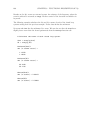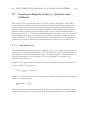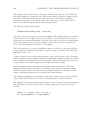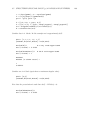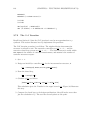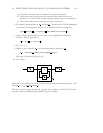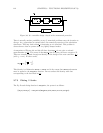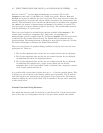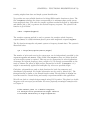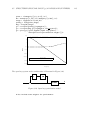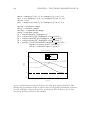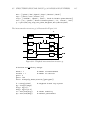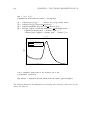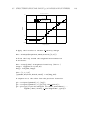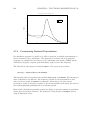3.7. STRUCTURED SINGULAR VALUE (µ) ANALYSIS AND SYNTHESIS 113
Both the D and D
−1
systems (Dsys and Dinvsys) are returned. The D scale
(Dmagdata) comes from a µ calculation on a closed loop system. However, Dsys and
Dinvsys are required to multiply the open loop system. They must therefore contain the
identity matrices for the inputs and outputs which correspond to the measurements and
controls. This information is not contained in blk and must be specified in the argument
list: nmeas is the number of measurements and ncntrl is the number of controls. The
user can specify a frequency domain weight for the fitting. The variable sens, returned
from the mu function, is a good option.
There are several choices of rational fitting functions available within musynfit.The
D-scale input variables are magnitude data. Phase data, corresponding to a
minimum-phase system is supplied with the Xµ function mkphase. The user has a choice
of functions for the transfer function fitting: the Xmath function tfid and the Xµ
function fitsys.Thefitsys function is discussed in more detail in Section 3.7.3 below.
For further information on tfid see the Xmath Basics Manual.
There are several choices of graphical display available to help the user select the most
appropriate fit. These are:
1. The D-scale magnitude data and the last two transfer function fits are displayed.
2. The D-scale magnitude data and the last two transfer function fits are displayed.
An additional plot shows the weighting function.
3. The D-scale magnitude data and the last two transfer function fits are displayed.
An additional plot compares the µ upper bound (which uses the D-scale
magnitude data) to the bound which would be obtained from a frequency response
of the D-scale transfer function fit.
In a problem with n perturbation blocks, there are n − 1 D scales requiring fitting. This
is because one can be chosen as the identity without loss of generality. The D scale for
each block requires user interaction for the selection of the system order. The function
fitsys is called to fit each D scale block. This is available to the user and is described
in more detail below.
Transfer Function Fitting Functions
The underlying functions used for the fitting of each block of the D scale are described
here as they may be of independent interest to the user. Other possible uses include




